When introducing a new member of the pack to your family, it is crucial to plan ahead and have the knowledge of how to navigate issues as they present themselves. A simple way to understand this process of getting your rescue dog adjusted and comfortable in its new home is called the 3-3-3 rule. This rule will help you understand the decompression process that your new furry friend will go through in the first 3 days, 3 weeks, and 3 months at a new home.

During the first 3 days, your newly adopted dog or puppy will be feeling extremely overwhelmed. It will be completely normal for them to act scared, rarely eat or drink, hide in a crate or under furniture, and test your boundaries with their behavior. Because of this, it’s important to prepare both your home and your mindset for your new friend. Let’s go over what you should do to prepare before rescuing your new furry friend and review a plan for the first 3 days of your furry friend’s new life in your home.
Preparing Your Home for Your Newly Adopted Dog:
1
Dog-Proof Your House
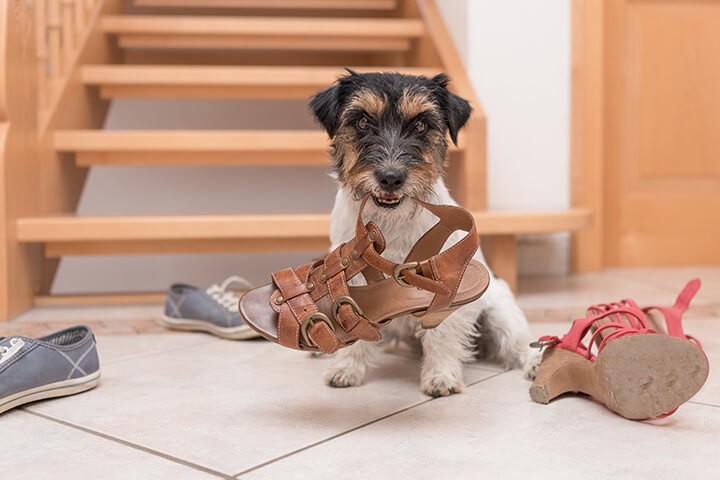
Take a walk through your entire house (or apartment) to make sure there are no enticing items for your new dog to chew. This includes hanging wires, clothes, shoes, food, and other small items (If you have a child, it is the same as baby proofing!). By removing these objects, you avoid the temptation for your dog toy chew or eat something that It should not, and avoid having to correct him/her at an early stage!
2
Walk Your Property (if applicable)
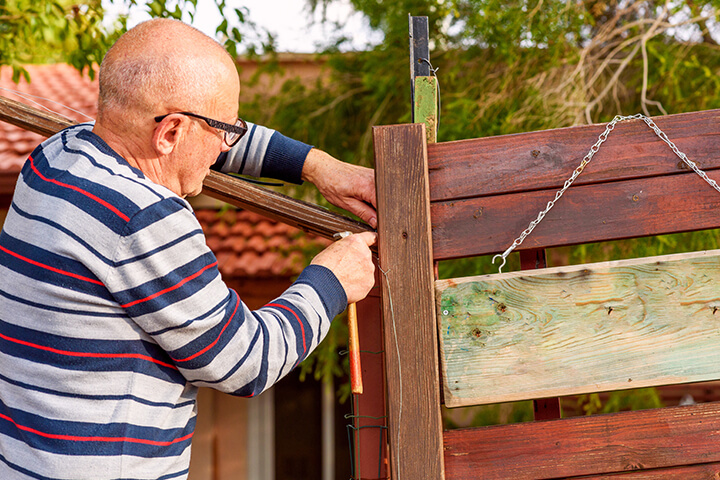
Make a point to walk your property a few times before bringing your newly adopted dog to the home. Use this time to make sure there are no areas that your dog can escape from, including holes in or around the fence! Also take the time to ensure there are no unwanted debris in the yard, and that all gates are closed and latched properly.
3
Purchase a Crate or Designate a Quiet Space
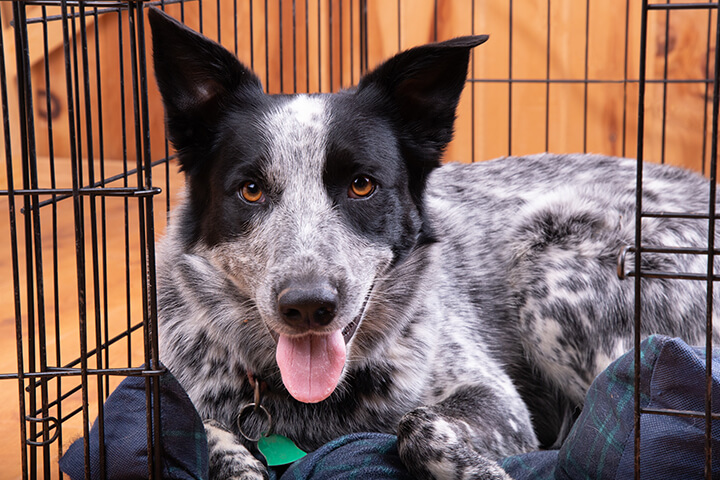
When bringing a new dog into your home, a crate can be an excellent tool to allow your dog a quiet space to decompress. This tool can represent a safe place, and if trained correctly can help your dog feel more comfortable in an uncertain environment. It is important to note that a crate should be used as a TOOL. This means that once the dog is comfortable, you have the option to get rid of the crate and never use it again. However, it is an extremely useful tool in the beginning that will make the life easer for you and your dog. Midwest Homes For Pets has an excellent crate kit to get you started
If you are not comfortable using a crate, then designate an area or room in your house for your dog to have his/her “quiet place”. This means that when they are in this area, the idea is to keep them calm and let them have their own space. It is crucial to foster independence early on, so that separation anxiety does not manifest later down the line.
4
Purchase Necessities
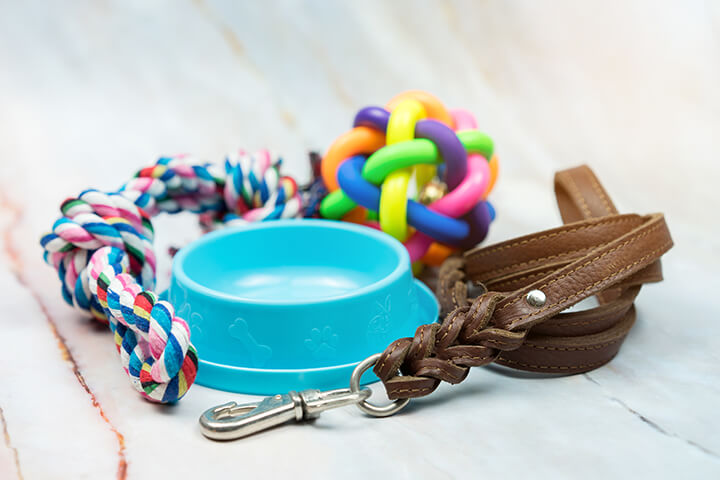
This is the most fun part of the process! Now it is time to pick out a collar, leash, food/water bowl, and of course…. toys! To get an idea of some products we use on the job, check out our Trainer’s Picks Blog.
Another important necessity is dog food! The best way to make sure you are choosing the right food is to research some of the top brands and understand their ingredient list. Dogfoodadvsior is an online database of every dog food individually rated and reviewed! Here is an awesome list to get you started.
Preparing Your Mind:
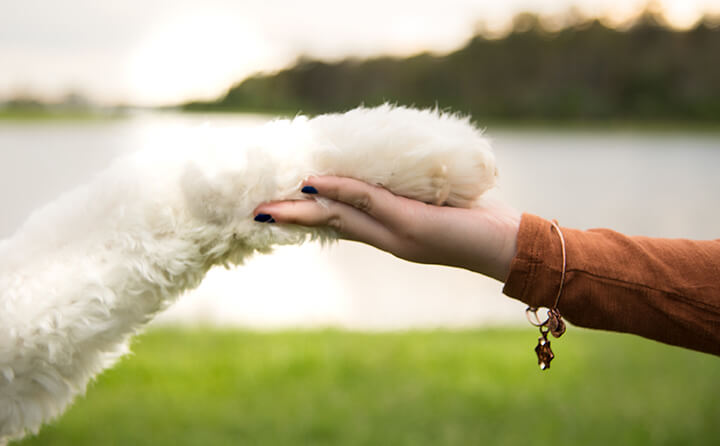
Building a Relationship with Your Rescue Dog
Whether you have been a previous dog owner or is this is your first time, it is crucial to understand to how to speak dog! That means understanding how to build a relationship and effectively communicate with your furry friend. This is going to pay huge dividends, as being able to mark, reward, reinforce, and correct your dog is crucial.
The First 3 Days:
1
Pick Up Your Dog and REMAIN CALM
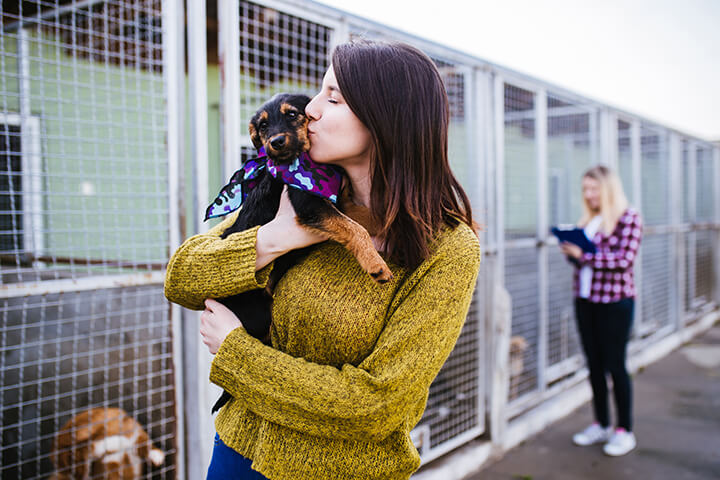
It is going to be extremely tempting to want to greet your newly adopted dog with excitement and love when you pick it up and transport it home (or when it is delivered). However, now is NOT the time for that… at least not yet! Since you are about to remove the animal from a familiar place and take them somewhere new, calmness and clear direction are essential to set the tone and establish the relationship on the right foot.
It is important to note that during this process, that same calm energy you portray in the initial meeting should be continued for the next 3 months and on. This does not mean there cannot be moments of excitement or affection, but overall that calm energy should be radiated at all other times!
2
Take a Walk
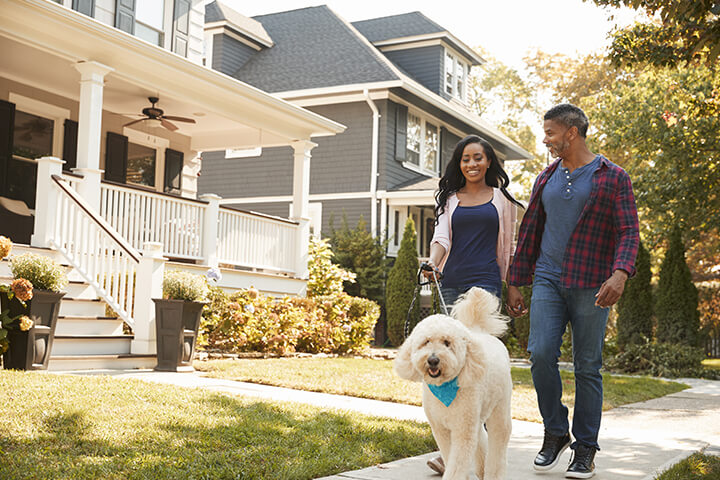
Once you arrive home, keep your dog on the leash and take it for a long walk around the neighborhood. The purpose of this walk is to:
– Drain surplus energy and help integrate them into the house without being hyper/too energetic
– Establish the initial boundaries of the relationship, including how to walk properly and how to listen
– Acclimate and adjust your rescue dog to their new environment, including smells, sights, and sounds for different dogs and their families in the neighborhood.
If you are having any issues with leash pulling or not being able to control your new furry friend, I highly recommend investing in a gentle leader as a training tool. This tool can be used initially to help fix bad habits and establish good ones. In addition, once this behavior is mitigated, the gentle leader can be phased out and they can resume walking again on a regular collar!
3
Take the Tour
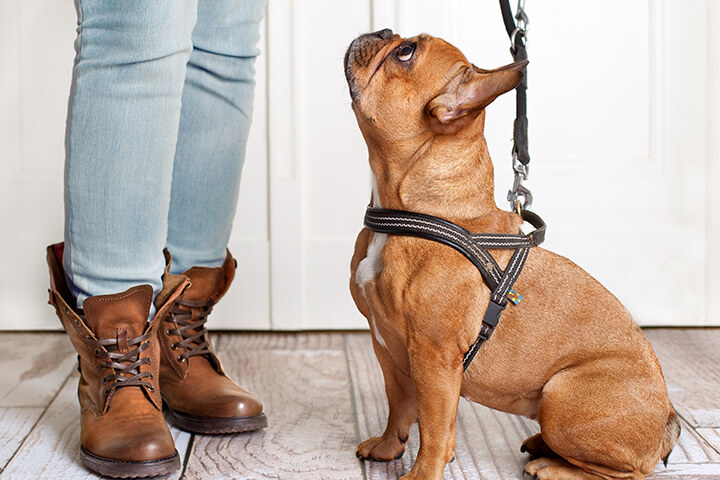
Once you have concluded your walk and your dog is worn out, it is time to bring them into the house! At this time, do NOT take off the leash yet. We still want them to be following us, and we do not want to let them sniff or wander. If we give them free reign immediately, we are sending the wrong message as the leader of the pack. Use the leash to keep them close to you, and slowly bring them from room to room. Spend a few minutes in each room, and make sure YOU leave and enter first. Every new area is an opportunity to establish leadership and train them to follow your lead! Once the tour is finished in your home, feel free to repeat the same steps if you have a backyard, patio, or other outside area.
Continue the tour around your home while trying to ignore your dog. Petting, eye contact, and talking are not recommended, as your dog is already extremely overstimulated at this point. It is in a brand-new environment with brand new people, so the less stimulation you create, the better it will be for the integration process. By remaining quiet, calm, and slowly leading them into each room, you will establish your leadership and help the dog stay focused on you.
4
Establish Boundaries
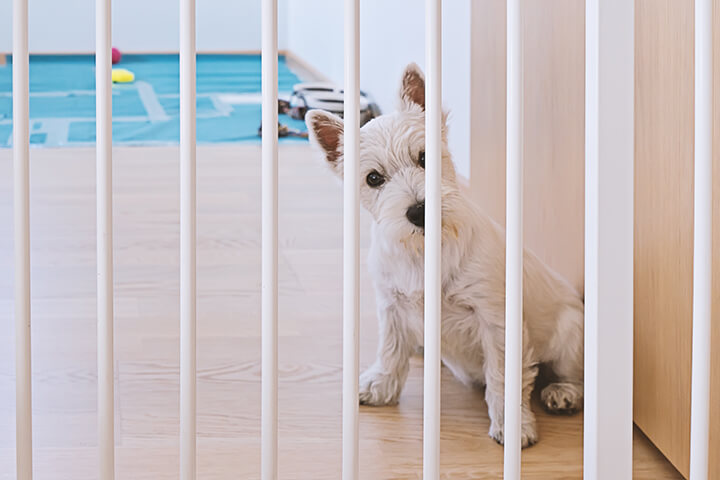
Once the tour is complete, it is now time to establish some basic boundaries for your new dog! Continue to lead them on leash to their feeding area, where you can let them have some water and a few pieces of food (or treats). This will help create the boundaries of the feeding time and establish an area that your dog is familiar with.
Once the feeding area has been introduced, take your dog to its bedroom. If it has a crate, I would begin by introducing it and letting your dog investigate. This could mean smelling, walking around, or just being curious. Feel free to open the crate and throw some treats or a bone in the back. Your new dog may just want to waltz right in after them! If they settle into the crate, feel free to remove the leash and shut the door. This will give them some time to decompress. If they seem anxious you can always leave the door open and allow them in and out access. The best way to acclimate them to a crate if they have never seen one is to feed them in it, put something comfy in it, and load it with treats!
If you have chosen to not use a crate, now is the time to let your dog off the leash and let them investigate the area. By releasing them from the leash, you are clearly reinforcing that this area belongs to them! If they immediately lay down or ignore the family, do not worry! This means you did the process correctly and they are already comfortable in the pack!
At this point your dog should now be familiar with the layout of the house, as well as the boundaries. I encourage you to limit the amount of freedom you give the first few days by shutting doors and / or having some rooms off limits! In addition, continue to foster that calm environment for your dog by not overwhelming it with attention and affection. You can acknowledge them if they are craving interaction, but do not go overboard with love yet! While it may be tempting, remember that giving your dog too much affection at this time could later lead to separation anxiety when you’re gone.
In this critical time your rescued dog is still adjusting to the home, so you must remain calm to teach them that this is YOUR territory and YOU make the rules. By using your affection as a resource to reward them when they do something good, during the first 3 days you will send a strong message that will resonate with them in the language of dog!
Setting a Routine for Your Newly Adopted Dog
Over the first three days your dog may not eat or drink, may act funny, and will still be getting used to the environmental change. At this time, it is crucial to establish a daily routine so your dog can understand the expectations. If you keep your routine consistent, you allow your dog to understand what is coming next in the day, and therefore reduce anxiety and stress. Here is an example of the daily routine we follow at our facility! An easy routine to follow if you are just getting started is to repeat this process three times a day:
Daily Plan for Your Newly Adopted Dog
repeat 3 times daily
Wake up / get ready to walk
on your terms, do not let them wake you or interrupt you from doing other things
Go for a walk
30 minutes to an hour – do not let them pull or lead the walk
Work on some basic commands
only has to be 5 minutes! Sit, wait, down, etc.
Feed (or treat if it is the afternoon)
make them sit and wait for their food if possible
Reward
after a walk, some training, and a meal is the BEST time to shower your dog with love
Ignore when entering / leaving
if you are off to work in the AM, or coming home in the PM, make sure to ignore your dog! If you get excited and say goodbye, you will get them evicted right before you leave. This can cause separation anxiety!
Additionally, if you come home from work and they are standing at the door, jumping, and/or super excited to see you- IGNORE THEM! If you acknowledge them and give affection at this point, you are positively reinforcing all the wrong behaviors, as well as creating an opportunity for separation anxiety to manifest later down the road.
By following these steps, you give your dog or puppy the greatest chance to succeed and decompress in its new environment. This process takes time, but by following this advice you mitigate a lot of the issues that can rise when adopting a rescue dog to be your new furry friend. If you are having any present issues acclimating your dog to the house, sign up for a free behavior assessment!

Excellent advice. Thank you. I have saved this for when we get our next rescue dog in a few weeks. We completely ruined our first dog, whom we found in the road, but love him to bits. (We have as much separation anxiety as him.)
My rescue suggestion to read the 3 3 3 rule. Very helpful TY!
Thank you for all of this!!! We are on day 3 with a 5 month old rescue. We hit some of this and not others but will get back on track.
The information was helpful although I know every dog is different. It’s been a long time since I had a dog. My doctor suggested that I get a dog for emotional support. I have allergies so I looking to rescue or adopt a hypoallergenic dog
Excellent advise. Especially since mine is not eating or drinking yet! Thank you.
I have found this all so helpful. We pick up our rehome tomorrow. I already feel more confident having read this. Thank you so much
Your information is wonderful and presented so well. Thank You. We adopted a 5 yr. old Lab mix last Saturday from the local shelter. She was in the process of decompensating. When we first saw her, she would run to the back of her pen and would cower down. We were told that she had been a court hold then put up for adoption. Apparently, she had been abused and when the owner had moved away, they had left her tied in the yard and the neighbor had been feeding her. So, when she picked us to come home with, we were thrilled. It is going to take a good 3 months to get her back to a really great dog. Already she is not trembling when my husband comes to her with a leash to take a walk. At the shelter they said that she acted as if she had never seen a toy and had no idea what to do with it. It has been 4 days and this morning she picked up 3 toys to play with and knew exactly what to do. Patience truly is the key and at her pace. Thank you for the great poster to use as a road map to see exactly where we are with her.
Thank you sooo much for loving this sweet girl! Success to you all!
Spirit Dog Training is wonderful!!!
Thank you sooo much for loving this sweet girl! Success to you all!
As a foster I truly appreciate the work and love and effort our new paw parents put into making a home for their new fur baby!
Spirit Dog Training is wonderful!!!
This info was extremely helpful! We haven’t brought our new pup home yet. I love the step by step instructions for success and feel like we now will know what to do. I will recommend these folks to anyone looking for an animal, extremely impressed!
Although we have adopted several dogs, this article provided several new insights.
I agree, this is great! I know how to train dogs, however a very fearful rescue dog needs to be handled carefully to get that lifetime of bonding and understanding to be a stable pup. I just got my rescue pup 2 days ago and just naturally did most of these things, just from knowing/reading about dogs. He went from completely shut down, to seeking my affection in 2 days. I always worry about the eating and drinking! Well, I just caught him out of the corner of my eye finally drinking out of his water bowl! I think he is going to be amazing!! I can’t wait to see where we are in 3 weeks, then 3 months and beyond!!!
This is fabulous! The 3-3-3 advice is great! I’d never seen it put so succinctly in one place.
Thank you for making this information mandatory. It’s all excellent since it’s been several years since I brought a rescue pup home. It was a great refresher course for me
Good article … thank you
Do you have some advice regarding the best way to introduce the new rescue dog to the other pets in the household -dog and cats -so that the interactions are positive from the beginning .
Thanks
Hi. Great advice/tips. I’m thinking of adopting a 5 month old pup. I work from home. My office is on the main level but my bedroom is upstairs. Should I have two crates? One upstairs and one downstairs? Or is that confusing for him?
I do have a kids play pen that I used on my lab puppy years ago instead of a crate that she would go in when I was not home and at night. Just not sure what is the best option for a rescue. He’s very shy and undersocialized.
Helpful
I came across your page looking for a printable table of the 3-3-3 rule to send to our new adopters. Please let me know if there is a version of this table I could use as it is so important for new adopters to understand how to make their new family member comfortable.
I’d also like to introduce myself as a state coordinator and Vice President of English Springer Rescue America, Inc. While we are a nationwide non-profit breed specific rescue group, I am based in Southern CA and was interested to see you offer boarding and training. I will be looking at your website in the near future to familiarize myself with your services. We occasionally do need professional training help and a local boarding facility would be a huge benefit.
Thank you!